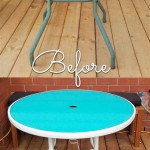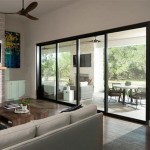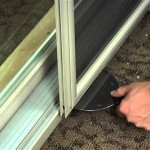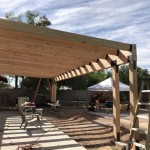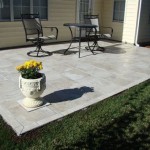Design Ideas for Paver Patios
Paver patios offer a versatile and aesthetically pleasing solution for outdoor living spaces. Their modular nature allows for a wide range of design possibilities, from simple, functional surfaces to intricate, visually stunning landscapes. When planning a paver patio, careful consideration should be given to factors such as size, shape, paver material, color, pattern, and surrounding landscape to ensure a cohesive and enduring design that meets both practical needs and aesthetic preferences.
The initial step in designing a paver patio involves determining the intended function of the space. Will it primarily be used for dining, relaxation, entertaining, or a combination of these activities? The intended function will dictate the size and shape of the patio. A dining area typically requires more space than a small seating area, and if frequent entertaining is planned, a larger patio with designated zones may be necessary. Consider the number of people who will typically use the space and the types of furniture that will be accommodated.
Beyond functionality, the surrounding landscape plays a crucial role in the overall design. The patio should complement the existing architecture of the house and blend seamlessly with the natural environment. Observe the existing sightlines, sun exposure, and drainage patterns on the property. This information will inform decisions about patio placement, orientation, and the need for features such as shade structures or retaining walls.
Choosing the Right Paver Material
The selection of paver material is a critical decision that impacts both the appearance and durability of the patio. Several options are available, each with its unique characteristics. Concrete pavers are the most common choice due to their affordability, versatility, and wide range of colors and styles. They are manufactured in various shapes, sizes, and textures, allowing for diverse design possibilities. Concrete pavers are also relatively easy to install and maintain.
Brick pavers offer a classic and timeless look, adding warmth and character to any outdoor space. They are durable and long-lasting, but tend to be more expensive than concrete pavers. Brick pavers also exhibit a more limited range of colors and patterns. Natural stone pavers, such as flagstone, slate, and travertine, provide a luxurious and natural aesthetic. They are highly durable and offer unique variations in color and texture. However, natural stone pavers are generally the most expensive option and may require more specialized installation techniques.
Permeable pavers are an environmentally conscious choice that allows rainwater to infiltrate the ground, reducing runoff and minimizing the impact on local waterways. These pavers have wider joints filled with permeable materials, such as gravel or sand, which allows water to drain through the surface. Permeable pavers are particularly suitable for areas prone to flooding or where stormwater management is a concern.
When choosing paver material, consider the overall style of the house and landscape. A modern house might benefit from sleek, geometric concrete pavers, while a traditional house might be better suited for brick or natural stone. Also consider the cost, maintenance requirements, and availability of the chosen material.
Exploring Paver Patterns and Layouts
The paver pattern significantly influences the visual appeal of the patio. Numerous patterns are available, each creating a distinct look and feel. A running bond pattern, where pavers are laid in rows with staggered joints, is one of the simplest and most common patterns. It is a versatile pattern that works well with both rectangular and square pavers.
A herringbone pattern, where pavers are laid at a 45-degree or 90-degree angle to each other, creates a more dynamic and visually interesting surface. This pattern is well-suited for areas where a more formal or sophisticated look is desired. Basketweave patterns involve arranging pavers in groups of two or more, alternating the direction of each group. This pattern creates a textured and visually appealing surface that can be adapted to various paver sizes and shapes.
Circular patterns are often used to create focal points or define specific areas within the patio. These patterns can be achieved using specialized paver shapes or by cutting standard pavers to fit the circular design. A random pattern, where pavers are laid in an irregular arrangement, creates a natural and informal look. This pattern is particularly well-suited for natural stone pavers, as it accentuates the variations in color and texture.
Mixing paver patterns can add visual interest and define different zones within the patio. For example, a running bond pattern could be used for the main patio area, while a herringbone pattern could be used to border a seating area or create a pathway. When combining paver patterns, it is important to maintain a consistent color palette and avoid creating a cluttered or overwhelming look.
Incorporating Design Elements and Features
Beyond the basic paver surface, various design elements and features can be incorporated into the patio to enhance its functionality and aesthetic appeal. A retaining wall can be used to create level surfaces on sloped properties, adding visual interest and providing additional seating. Retaining walls can be constructed from the same paver material as the patio or from complementary materials such as natural stone or brick.
Steps and pathways can be integrated into the patio design to connect different areas of the landscape. Steps can be constructed from paver material or from other materials such as wood or natural stone. Pathways can be used to guide visitors through the garden or lead to a specific destination, such as a fire pit or seating area.
Fire pits and outdoor fireplaces provide warmth and ambiance, extending the usability of the patio into the cooler months. Fire pits can be constructed from paver material or from other materials such as brick or natural stone. Outdoor fireplaces offer a more permanent and stately look, creating a focal point for the patio.
Water features, such as fountains or ponds, add a sense of tranquility and visual interest to the patio. Water features can be incorporated into the patio design in various ways, from small tabletop fountains to large, elaborate ponds. Planting beds can be integrated into the patio design to add color, texture, and visual interest. Planting beds can be used to soften the edges of the patio, create privacy, or define different zones within the space.
Lighting is an essential element of patio design, enhancing safety and creating ambiance. Low-voltage landscape lighting can be used to illuminate pathways, highlight architectural features, and create a warm and inviting atmosphere. Consider using a combination of path lighting, accent lighting, and task lighting to create a layered and functional lighting scheme.
Furniture and accessories complete the patio design, adding comfort, style, and functionality. Choose furniture that is durable, weather-resistant, and comfortable. Consider the style of the house and landscape when selecting furniture and accessories. Add cushions, pillows, and throws to create a comfortable and inviting seating area. Include decorative items such as planters, sculptures, and outdoor rugs to personalize the space.
Proper drainage is crucial for ensuring the longevity and functionality of a paver patio. The patio should be sloped slightly away from the house to allow rainwater to drain away from the foundation. Install drainage systems, such as French drains or surface drains, to manage excess water and prevent ponding. Ensure that the paver base is properly compacted to provide a stable and even surface for the pavers.
Regular maintenance is essential for keeping the paver patio looking its best. Sweep the patio regularly to remove debris and prevent staining. Power wash the patio periodically to remove dirt, algae, and mildew. Seal the pavers to protect them from stains and weathering. Repair any damaged or cracked pavers promptly to prevent further damage.

Paver Patio Design Ideas S Remodel And Decor Pavers Stone Designs Backyard

Dreamy Paver Patio Design With Seat Wall Plan Mypatiodesign Com

Top Patio Paver Ideas Savon Pavers

Small Paver Patio Design Layout And Material List Mypatiodesign Com

Paver Patio Ideas The Cards We Drew

5 Paver Patio Ideas To Add Your Outdoor Landscape Design In Bedford Nh Northern Lights

Paver Patio Designs And Ideas Pavers Design Backyard

8 Best Walkway And Patio Paver Design Ideas For 2024

Paver Patio Ideas Landscaping Network

Paver Patio Design Ideas Installation Arizona Living Landscape



